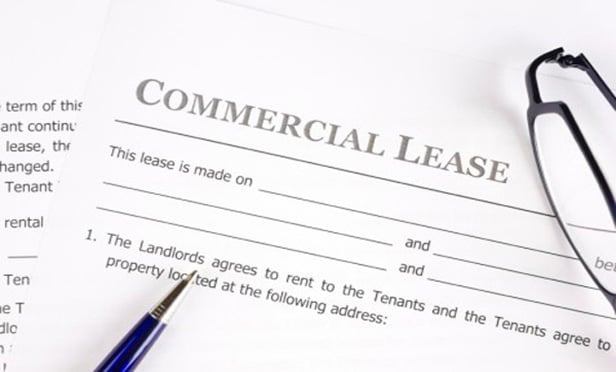Columns & Departments

Real Property Law
Injunctive Relief Denied In Action to Enforce Restrictive Covenant Neighbor Lacked Standing to Enforce Restrictive Covenant Easement Holder Entitled to Preliminary Injunction Disposition to Husband and Wife Creates Tenancy By the Entirety Tax Sale Notice Satisfied Statutory and Constitutional Requirements
Columns & Departments

Co-ops and Condominiums
No Binding Contract Between COOPA and Shareholders Failure to Provide Notice of Mortgage Justifies Return of Downpayment In Foreclosure Sale
Columns & Departments

IP News
Proving Damages for Trademark Infringement In the Eleventh Circuit
Features

11th Circuit Joins Controversy Among Circuits on Copyright Damages Look Back
The federal appellate court in Atlanta, GA, in a case of first impression "that has divided our sister courts" over the U.S. Copyright Act's §507(b) statute of limitations on recovering damages beyond three years of a copyright lawsuit filing, just added to that division.
Columns & Departments

Bit Parts
Script Writer Newton's Funding-Help Lawsuit Against Former NBCUniversal Vice-Chair Meyer Is Dismissed
Features

Negotiating Surrender Clauses In Commercial Leases
Notwithstanding the importance of a lease to the balance sheets of both landlords and tenants, surrender provisions are commonly glossed over and consequences can be detrimental to either side.
Features

Liquidated Damages In Real Estate Transactions
Commercial real estate is a unique asset, making damages resulting from a breach of an agreement involving it are often difficult to measure. As a result, parties to such agreements must give careful thought to the remedies for such breach, including liquidated damages.
Features

What Constitutes A Landlord's Acceptance of a Tenant's Surrendered Lease During COVID?
As pandemic-related business disruptions continue to appear on dockets statewide, a reversal by the Georgia Court of Appeals has clarified what does, or rather does not, constitute a landlord's acceptance of a tenant's surrendered lease.
Need Help?
- Prefer an IP authenticated environment? Request a transition or call 800-756-8993.
- Need other assistance? email Customer Service or call 1-877-256-2472.
MOST POPULAR STORIES
- The 'Sophisticated Insured' DefenseA majority of courts consider the <i>contra proferentem</i> doctrine to be a pillar of insurance law. The doctrine requires ambiguous terms in an insurance policy to be construed against the insurer and in favor of coverage for the insured. A prominent rationale behind the doctrine is that insurance policies are usually standard-form contracts drafted entirely by insurers.Read More ›
- A Lawyer's System for Active ReadingActive reading comprises many daily tasks lawyers engage in, including highlighting, annotating, note taking, comparing and searching texts. It demands more than flipping or turning pages.Read More ›
- The Brave New World of Cybersecurity Due Diligence in Mergers and Acquisitions: Pitfalls and OpportunitiesLike poorly-behaved school children, new technologies and intellectual property (IP) are increasingly disrupting the M&A establishment. Cybersecurity has become the latest disruptive newcomer to the M&A party.Read More ›
- Abandoned and Unused Cables: A Hidden Liability Under the 2002 National Electric CodeIn an effort to minimize the release of toxic gasses from cables in the event of fire, the 2002 version of the National Electric Code ("NEC"), promulgated by the National Fire Protection Association, sets forth new guidelines requiring that abandoned cables must be removed from buildings unless they are located in metal raceways or tagged "For Future Use." While the NEC is not, in itself, binding law, most jurisdictions in the United States adopt the NEC by reference in their state or local building and fire codes. Thus, noncompliance with the recent NEC guidelines will likely mean that a building is in violation of a building or fire code. If so, the building owner may also be in breach of agreements with tenants and lenders and may be jeopardizing its fire insurance coverage. Even in jurisdictions where the 2002 NEC has not been adopted, it may be argued that the guidelines represent the standard of reasonable care and could result in tort liability for the landlord if toxic gasses from abandoned cables are emitted in a fire. With these potential liabilities in mind, this article discusses: 1) how to address the abandoned wires and cables currently located within the risers, ceilings and other areas of properties, and 2) additional considerations in the placement and removal of telecommunications cables going forward.Read More ›
- Guidance on Distributions As 'Disbursements' and U.S. Trustee FeesIn a recent case from the Bankruptcy Court for the District of Delaware, In re Paragon Offshore PLC, the bankruptcy court provided guidance on whether a post-plan effective date litigation trust's distributions constituted disbursements subject to the U.S. Trustee fee "tax."Read More ›
